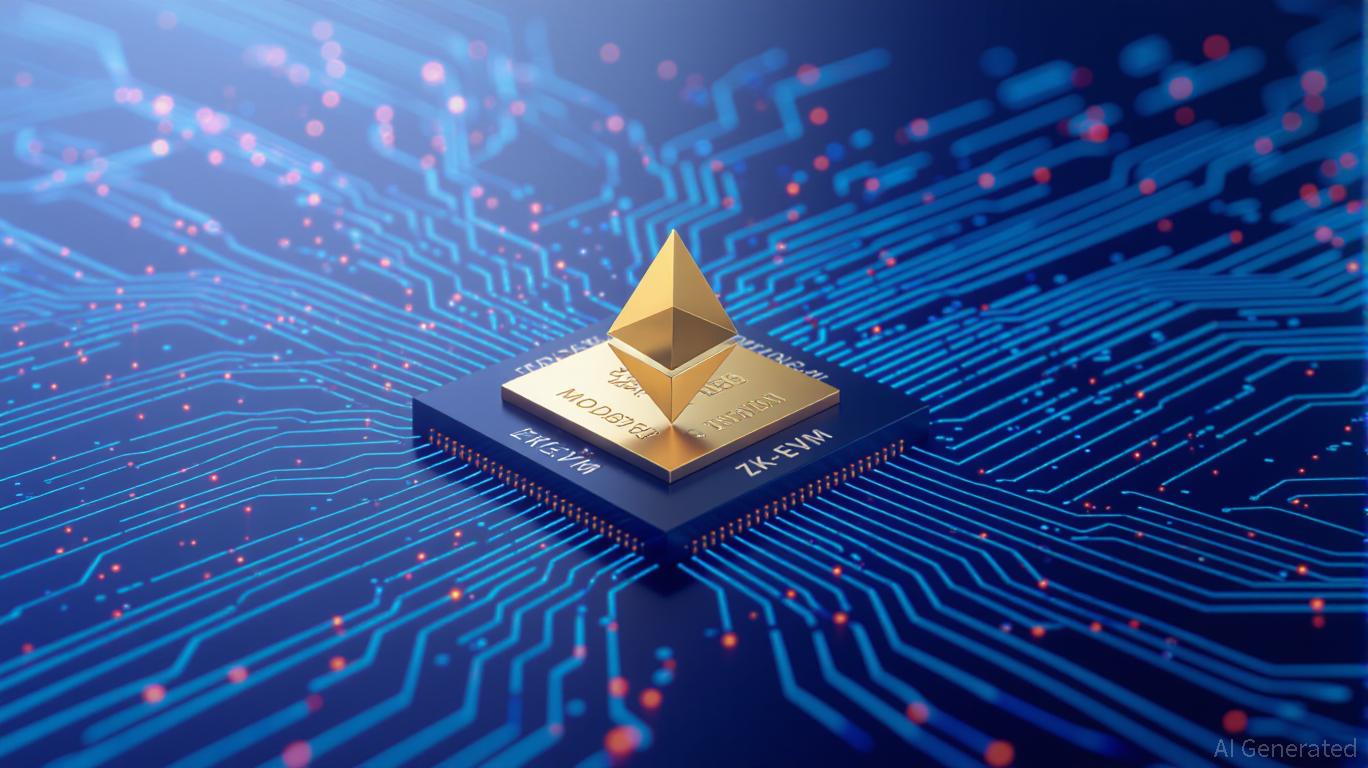Vitalik Buterin Introduces a Novel ZK Research Initiative and Its Potential Impact on Blockchain Scalability
- Vitalik Buterin proposes deprecating Ethereum's modexp precompile to boost ZK proof efficiency, accepting higher gas costs for long-term scalability. - ZKsync's Atlas upgrade achieves 15,000 TPS with open-source liquidity tools, attracting enterprises through privacy and interoperability. - ZK Rollups outperform Optimistic Rollups in security and finality, gaining traction in finance despite higher computational costs. - ZK-based solutions align with regulatory demands, with ZKsync's deflationary tokenom
Technical Breakthroughs: Phasing Out the Modexp Precompile
Buterin’s suggestion addresses a major bottleneck in Ethereum’s design. The modexp precompile, originally intended to speed up modular exponentiation, has unintentionally become an obstacle for ZK-EVM solutions.

ZKsync’s Atlas Update: Demonstrating Enterprise Integration
The Atlas upgrade for ZKsync, released in 2025, showcases how ZK-based technologies can fulfill enterprise requirements. This update
ZK Versus Optimistic Rollups: Comparing Two Approaches
Optimistic Rollups are still favored for their straightforward deployment and compatibility with existing Ethereum contracts, but ZK-based platforms are gaining ground in scenarios that demand instant finality and privacy. A study by ResearchGate points out the main distinctions: Optimistic Rollups use a challenge period to validate transactions, which can delay fund availability, while ZK Rollups rely on cryptographic proofs for immediate finality. This makes ZK Rollups especially suitable for financial operations and identity checks, where both speed and security are essential. However, the higher computational demands of ZK proof generation continue to limit their broader use.
Regulation and Enterprise Uptake: ZK’s Strategic Advantage
As regulatory oversight intensifies, ZK-based solutions are uniquely equipped to address compliance needs. ZKsync’s appeal to institutions has grown as its token shifted from a governance focus to a value-driven model, matching corporate preferences for stable tokenomics.
Investment Perspective: The Enduring Promise of ZK
For those investing in blockchain, the intersection of technical progress, institutional interest, and regulatory fit creates a strong case. ZK-powered Layer 2 networks are
Final Thoughts
Vitalik Buterin’s ZK research initiative is more than a minor technical change—it represents a strategic shift in Ethereum’s scaling direction. By tackling outdated inefficiencies and backing ZK-based platforms like ZKsync, the Ethereum community is paving the way for a blockchain that is scalable, secure, and ready for enterprise use. For investors, the message is unmistakable: ZK-based Layer 2 solutions are not only the future of Ethereum but also a key asset class in the expanding blockchain industry.
Disclaimer: The content of this article solely reflects the author's opinion and does not represent the platform in any capacity. This article is not intended to serve as a reference for making investment decisions.
You may also like
Next-Gen Altcoins: 4 Projects Set to Deliver Exceptional Long-Term Returns

XRP Sees 1.4M Token Drain and $336M Shock Ahead of ETF Launch

Lukashenko Pushes for Cryptocurrency Mining to Reduce Belarus’s Dollar Reliance

